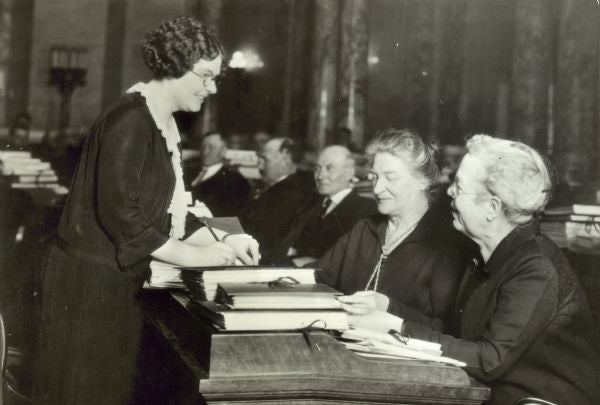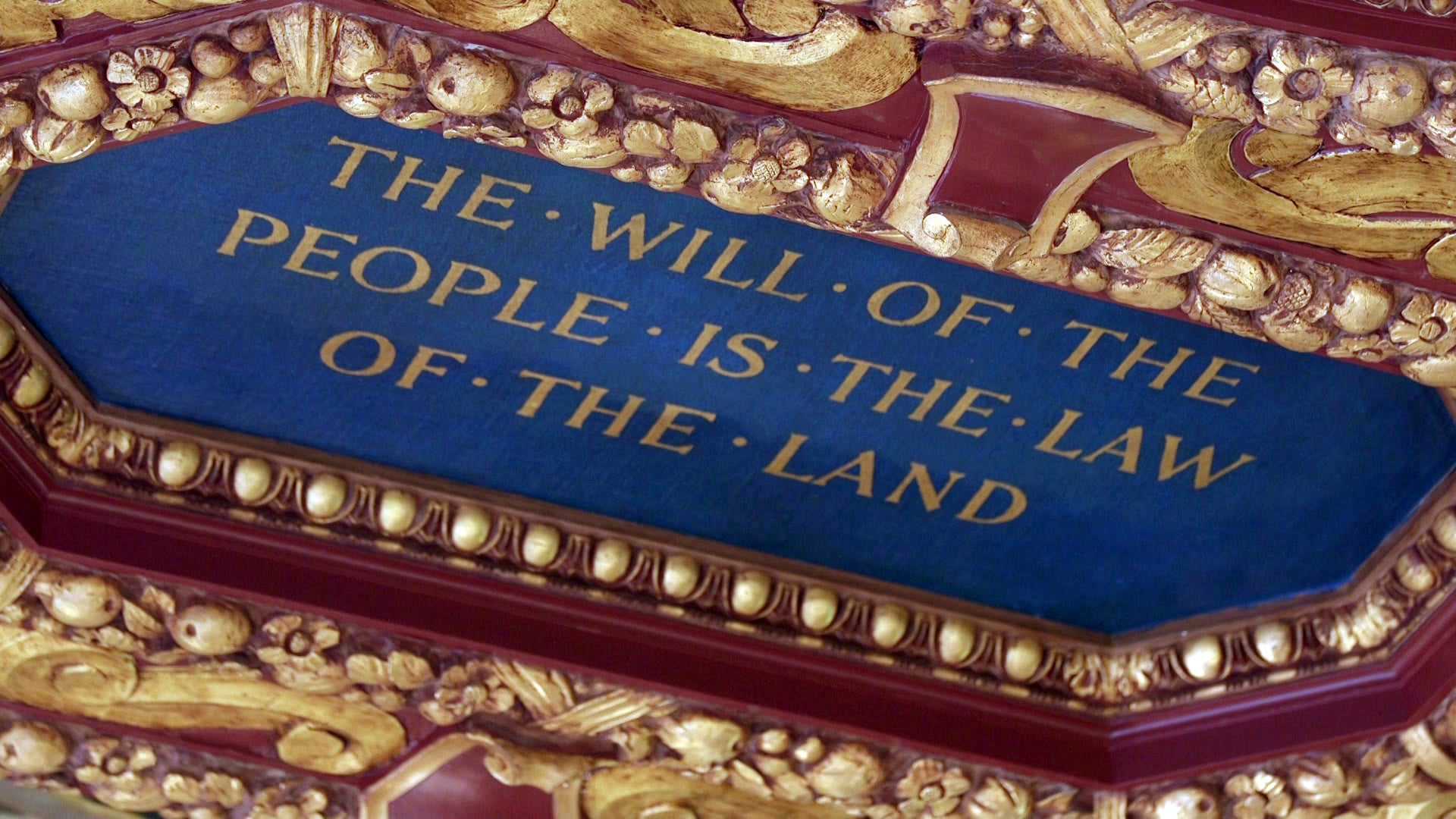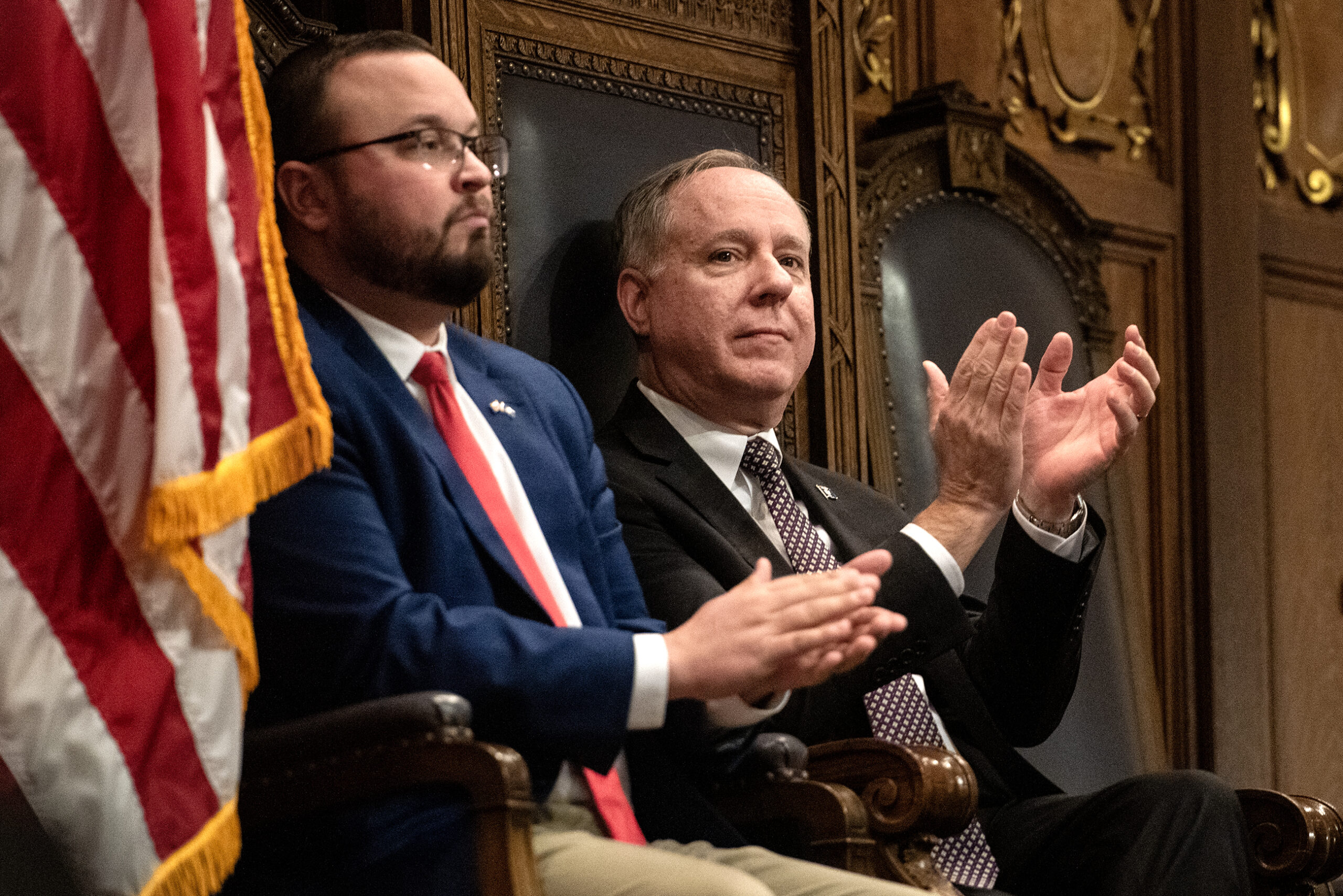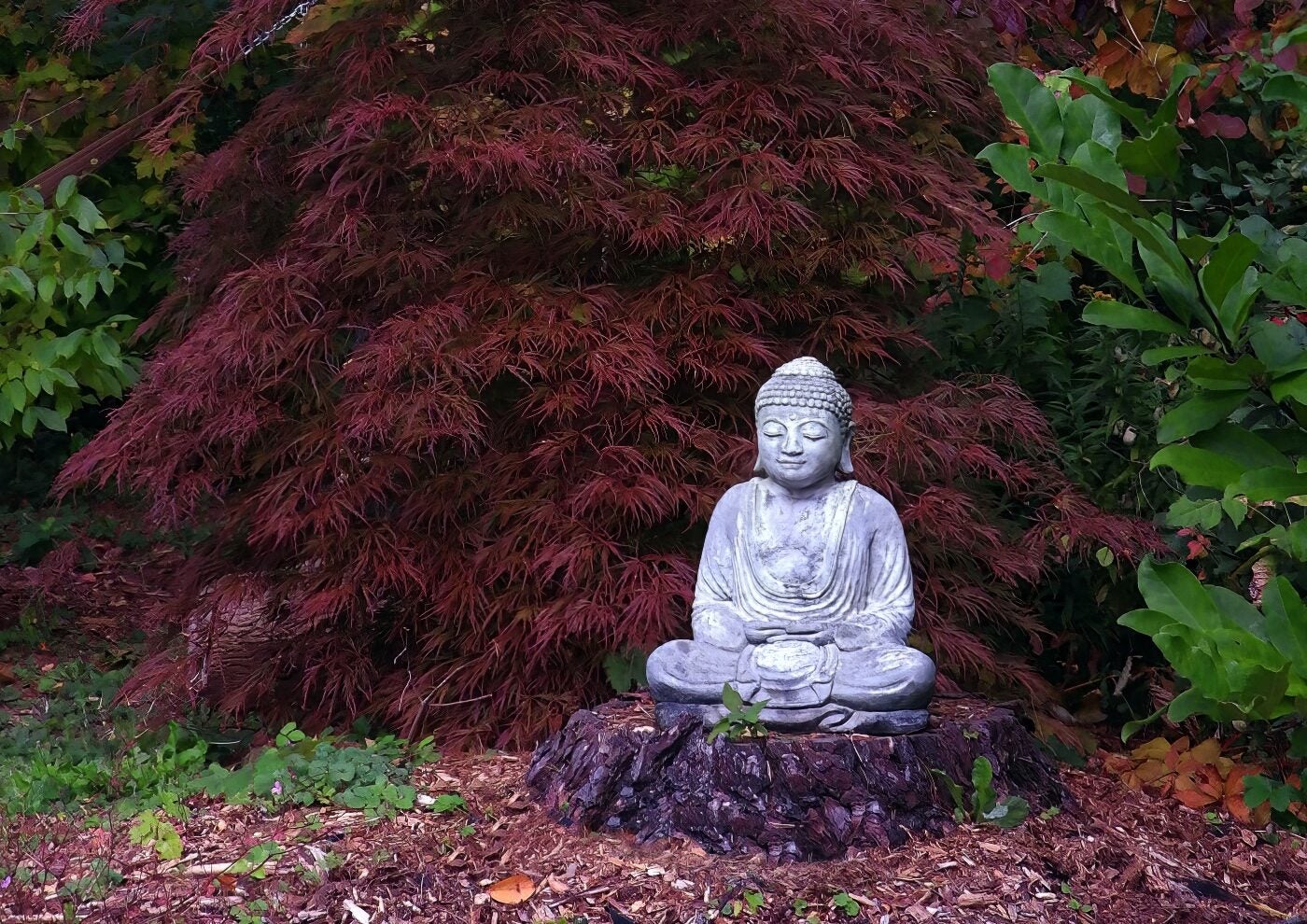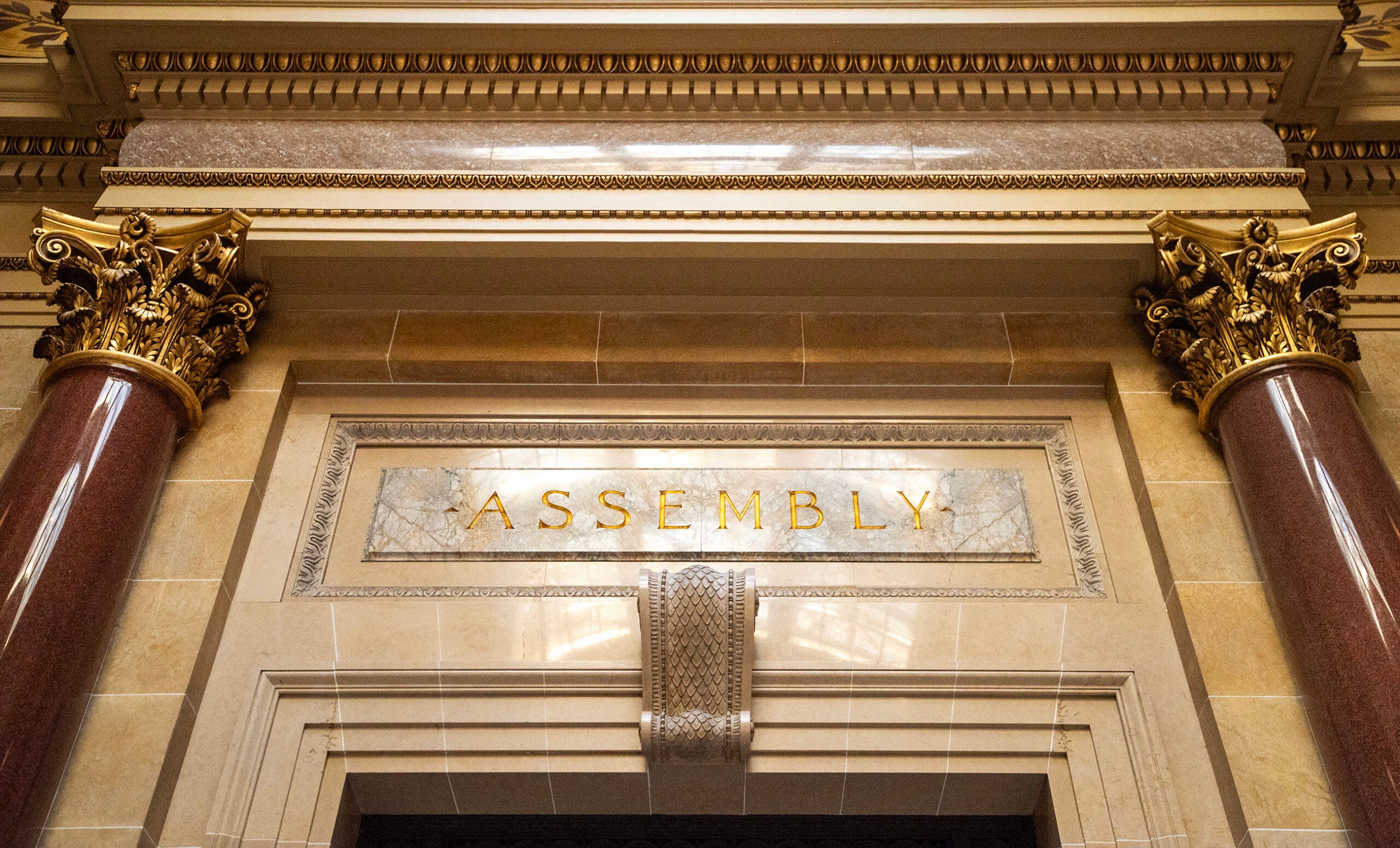In 1924, the year that she was elected to the Wisconsin state Assembly, Helen Thompson offered a pledge to her local press.
“They talk about a woman’s sphere as though it had a limit,” she wrote. “There’s not a place in earth or heaven, there’s not a task to mankind given, there’s not a blessing or a woe, there’s not a whispered yes or no, there’s not a life, or death or birth, that has a feather’s weight of worth without a woman in it.”
That year, she, Mildred Barber and Hellen Brooks became the first women to serve in the state Legislature — just a handful of years after the 19th Amendment offered women the right to vote in 1920.
News with a little more humanity
WPR’s “Wisconsin Today” newsletter keeps you connected to the state you love without feeling overwhelmed. No paywall. No agenda. No corporate filter.
Wisconsin Public Radio’s WHYsconsin was asked: How many women are there in the state Legislature? When was the first woman elected?
Those seemingly straightforward questions open a winding history through the state Capitol, from those first female assemblymen — as they were titled — to today, when women hold a record 41 of the state Legislature’s 132 seats.

A campaign flyer for Marcia Coggs, the first Black woman elected to the Wisconsin state Legislature in 1977.Photo courtesy of the Wisconsin Historical Society and Wisconsin Historic Images
In less than a century, women have also served in other elected and appointed statewide offices and been sent to the U.S. Congress to represent Wisconsin. This history is shorter for women of color. It’s been less than 50 years since Marcia Coggs became the first Black woman elected to the Wisconsin state Legislature in 1977. She served in the Assembly until 1993.
In recent decades, women have also served in party leadership in the Legislature, including minority and majority leaders in the Assembly and Senate.
Today, 33 women serve in the Assembly and eight women serve in the Senate. This may change in April, when a special election will determine who fills an open seat in the 8th Senate District — previously held by a woman, Sen. Alberta Darling.
All told, of about 6,000 people who have served in the state Legislature since 1848 — the year Wisconsin became a state — 151 representatives and 37 senators were women. Because some people serve in both chambers at different points in their careers, that totals out to about 3 percent of all state representatives, and 3.5 percent of all state senators.
But that small representation belies an outsized influence on government and policy, said Jenifer Cole, executive director of the Women’s Council, a bipartisan state commission that researches and advocates for Wisconsin women.
“Women have been playing a key role in our government at all levels,” she said.
Wisconsin’s milestones: Past and future
Wisconsin was the first state to ratify the 19th amendment, giving women the right to vote, in 1919. Wisconsin also passed the nation’s first equal rights bill, declaring men and women have equal rights under the law. Passed in 1921, the bill affirmed that one of those rights includes holding office.
The path to these landmark laws came after decades of women campaigning on behalf of others, and occasionally attempting to serve themselves, said Jillian Slaight, a legislative analyst with the Wisconsin Legislative Reference Bureau.
In the earliest election cycles, women often had trouble gaining major party support.
“The women who ran, they would have been doing what we call ‘get out the vote’ activities for these parties for decades before the 19th Amendment became law,” Slaight said. “But then when it came to running themselves, as candidates, they found it difficult to get the support from their male peers that they had given to their male peers when they ran.”
By 1924, about 400 women in Wisconsin held public office, primarily on school and library boards, but also as county supervisors, alders, sheriff, and a so-called “lady mayor.”
That same year, the first women were elected to serve in the Legislature. The headline of a Wisconsin State Journal article, dated Nov. 30, 1924, blared the news: “Women serve in Legislature the first time.”
Barber, Brooks and Thompson were sworn into the state Assembly; and the three were referred to, by law, as assemblymen. That title was not changed in state statute until 1969, when members of the assembly became known as representatives.
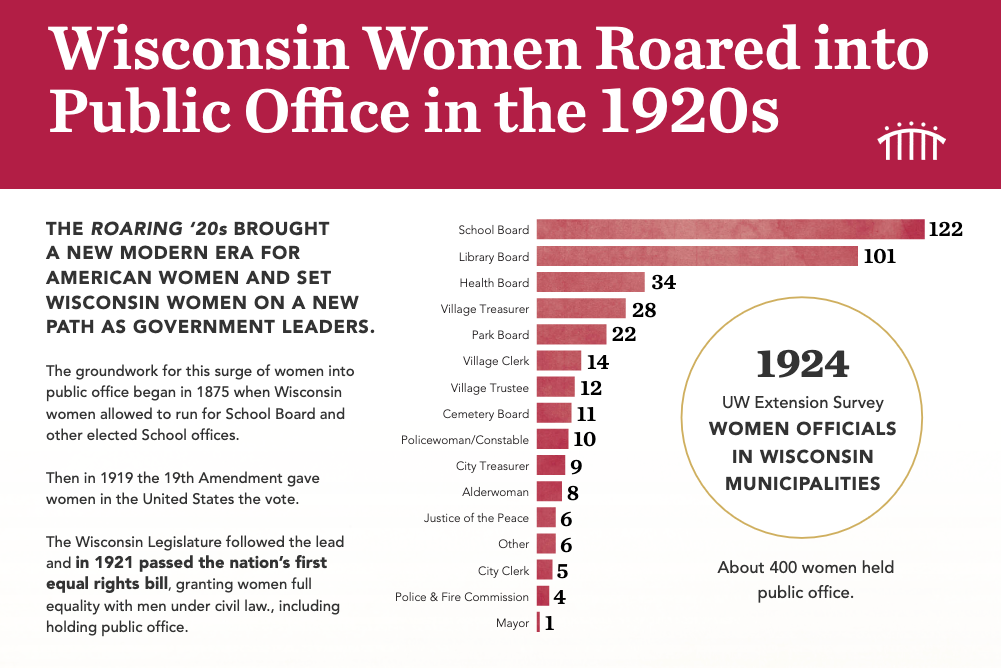
All three women were teachers, and Thompson and Brooks volunteered with the Red Cross during World War I.
“The first female legislators are kind of treated as oddities,” said Slaight.
Newspaper records of the time focused on the women’s appearances and whether they had children, she said. “And if so, how many and how old they were, as if implying that women with small children shouldn’t serve in government.”

Campaign materials for Dottie Baguhn, who ran for state Assembly from Marathon County. Photo courtesy of the Wisconsin Historical Society and Wisconsin Historic Images

Campaign materials for Dottie Baguhn, who ran for state Assembly from Marathon County. Photo courtesy of the Wisconsin Historical Society and Wisconsin Historic Images
Only Thompson was reelected for a second term; she was also the only one of the three to introduce a bill that became a law.
“I think some people would expect the first woman legislator to carve out some area of interest that her male peers had ignored,” said Slaight. “But it was just a very boring bill, about how to manage state lands, which I think underscores the fact that, when it comes down to it, some women legislators just have the same priorities as their male peers.”
According to a report from the Alverno College Research Center for Women and Girls, women did not start to regularly serve in the Wisconsin Legislature for decades after the equal rights bill. At most, one woman served per year from 1926 to 1943, and no new women were elected in the 1950s or 1960s.
It wasn’t until the 1970s — 50 years after the first female representatives — that Kathryn Morrison became the first woman elected to the state Senate in 1974. Three years after that, Coggs, the first woman of color, entered the Capitol as a representative from Milwaukee.
Since then, the number of women elected each election cycle has climbed.
Women made up about a quarter of the body’s 132 seats for decades until 2021. That year set a new record for women in the Legislature, when women held 41 of the 132 seats, or about 31 percent of seats.
That’s roughly on par with other states. A 2023 report by the Women’s Legislative Network at the National Conference of State Legislatures found that about 2,451 women serve across the 50 state legislatures in the United States, making up 33 percent of all state legislators nationwide.
“This percentage is the highest we’ve seen in our nation’s history,” the report notes.
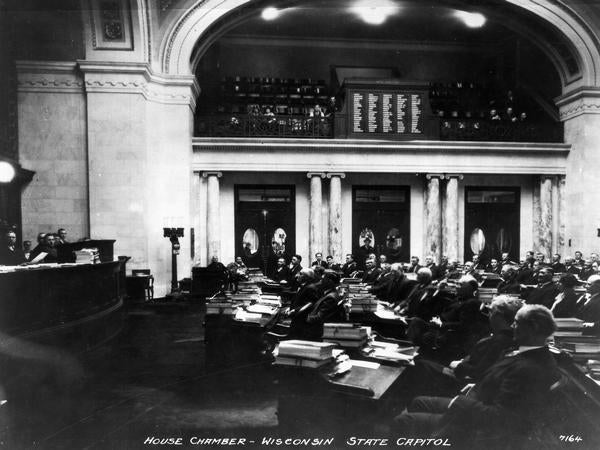
In the last 40 years, women in Wisconsin accomplished a series of other firsts in the state Legislature.
Sen. Susan Engeleiter became the first woman to serve as Senate Minority Leader in 1985. Two years later, Rep. Betty Jo Nelsen was the first woman to serve as Assembly Minority Leader.
More recently, in 2015, Sen. Mary Lazich was the first woman to serve as Senate President. Her election marked the first time a woman served as presiding officer of either legislative chamber.
In total over the course of Wisconsin’s statehood, the proportion of female representation is small: just about 3 percent of all state legislators have been women.

Campaign materials for Ruth B. Doyle, the first woman from Dane County to be elected to the Wisconsin State Assembly. She is the mother of former Gov. Jim Doyle. Photo courtesy of the Wisconsin Historical Society and Wisconsin Historic Images
And there’s a representation gap for women of color, according to the Women’s Council.
In 2021, women of color comprised 8 percent of state legislators. The first Latina woman, JoCasta Zamarripa, was elected in 2011, and the first Asian-American woman, Francesca Hong, was elected in 2021 — a full century after the passage of the state’s equal rights bill.
Other milestones have yet to be achieved by women in the state Legislature. While women have held tribal offices in Wisconsin, no Native women have been elected to the Legislature. And no woman has yet served as Assembly Speaker.
Cole of the Women’s Council said female representation in elected office matters to bring a diversity of perspectives into the body that sets policy for all Wisconsinites.
“We have our perspectives and our experiences to bring to that table and really can be beneficial to, as policymakers, really keeping a lens towards the needs of women, advancing the equality of women to be able to participate in every aspect,” she said. “Being able to be at the table where decisions are made that affect all of those aspects of our lives — it is important.”
This story was inspired by a question shared with WHYsconsin. Submit your question below or at wpr.org/WHYsconsin and we might answer it.

